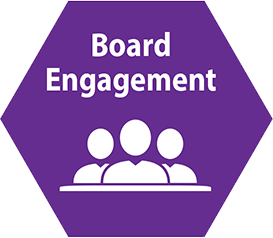
When it comes to achieving zero harm in healthcare, there is no silver bullet solution. Leading a Culture of Safety: A Blueprint for Success does, however, outline six leadership domains that can help ensure safety remains a focus from the top down in hospitals and other healthcare settings.

Thus far, we’ve covered the importance of establishing a vision for safety; building trust, respect and inclusion; and prioritizing safety in the selection and development of leaders. Next on the agenda, we’re going to delve into the role of governing boards in creating and maintaining safety cultures.
In every healthcare organization, the ultimate responsibility for system-based errors and their resulting costs rests with the CEO and Board of Directors. On this topic, Gary Yates, MD, partner, strategic consulting, Press Ganey, recently told Healthcare Executive magazine this: “The organizations that we see making the most progress are those with tight alignment among the board, senior leadership and medical staff leadership.”
Increasingly, CEOs and boards will be held responsible for harm and death caused by error. In the long run, patient and workforce safety will not only be a moral imperative but will also be critical to sustainability and essential to delivering on value.
So how can governing boards help move healthcare organizations in the right direction on their journey to zero harm? It starts by just making discussions about safety a priority. Numerous studies have found that spending more board time on quality issues was associated with higher hospital quality scores. “Attention is the currency of leadership,” James Orlikoff, president, Orlikoff & Associates Inc, told Healthcare Executive. “Boards that spend their time and attention on issues of patient safety and quality will have better results than boards that don’t.”
Let’s look to the Blueprint for specific tactics leaders can implement at their respective organizations.
Selecting, Developing and Engaging Your Board
In recruiting board members, considerable thought should be given to the competencies, skills, experiences and diversity needed to create and sustain a culture of safety. These skills may include specific competencies related to leading culture improvement efforts, as well as clinical and safety competencies. Ensuring that there is robust clinical expertise in the Board room is a must. Recruitment efforts should also include measures of diversity to ensure the board is representative of the community and workforce it serves. The board should include patient and family representatives as well.
When it comes to development and engagement, here are a few tactics to consider implementing:
- Establish a Board Quality and Safety Committee with oversight responsibility for culture change, safety and performance improvement.
- Encourage the board to link executive compensation to safety outcomes, while ensuring the metrics chosen do not discourage safety efforts.
- Regularly share and discuss a dashboard that includes patient and workforce safety and culture metrics. Additionally, align the dashboards to show these metrics segmented by categories related to disparities in care.
- Begin each board meeting with a slide detailing the number and names of patients and staff who experienced harm since the last meeting and include a story about at least one of these individuals.
- Bring frontline teams to board meetings to share their success stories and receive recognition.
- Include board members on guided leadership rounds. To go further, request that board members spend time on all floors and units communicating and supporting the safety agenda.
- Utilize a board self-assessment that includes inquiry on safety culture knowledge to determine educational opportunities.
Homework
To learn more about specific healthcare organizations that have worked with their governance teams to transform their safety culture, read the full Healthcare Executive article, “Engaging the Board in Patient Safety Goals.” Listen to the Healthcare Executive Podcast episode, “Zero Harm in Healthcare,” featuring M. Michael Shabot, MD, founding partner, Relia Healthcare Advisors, for best practices related to attaining high reliability in healthcare.






















